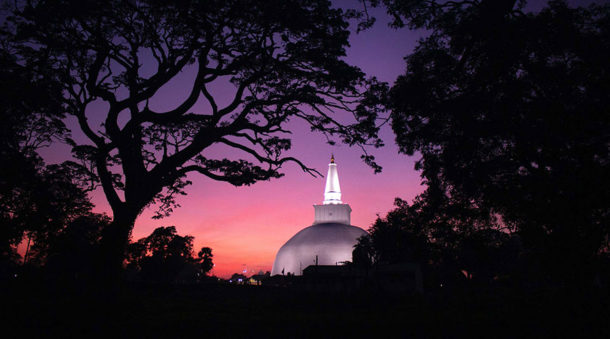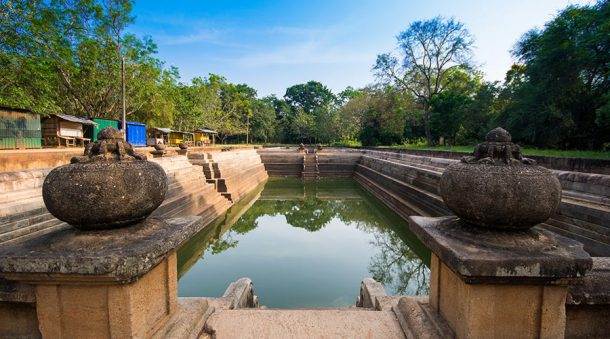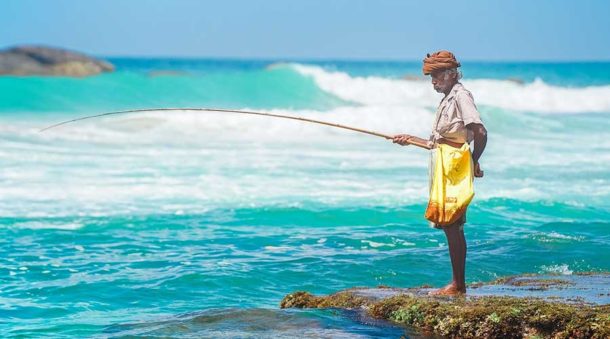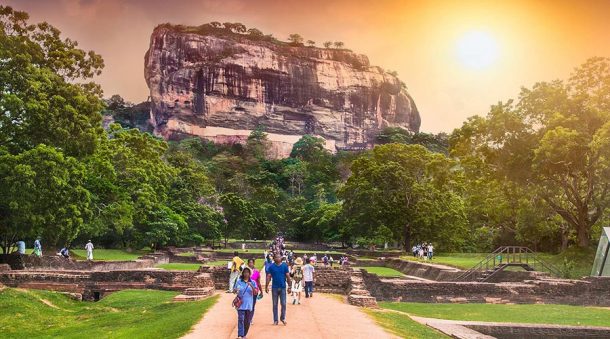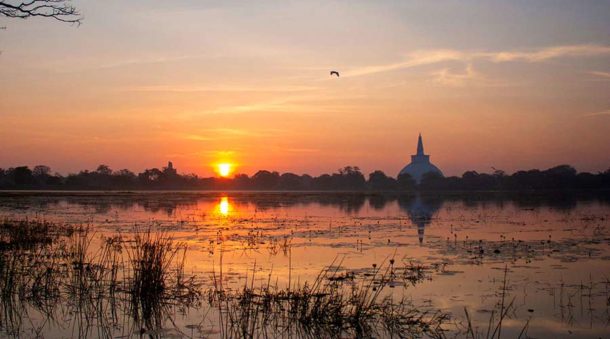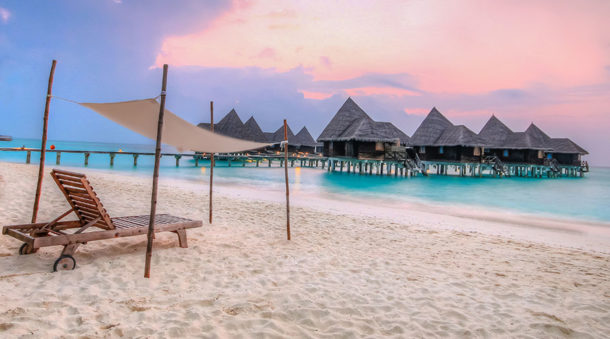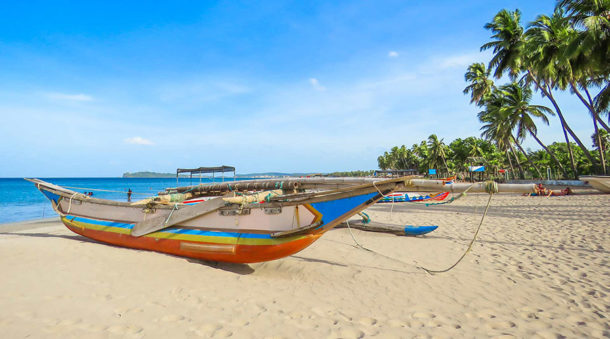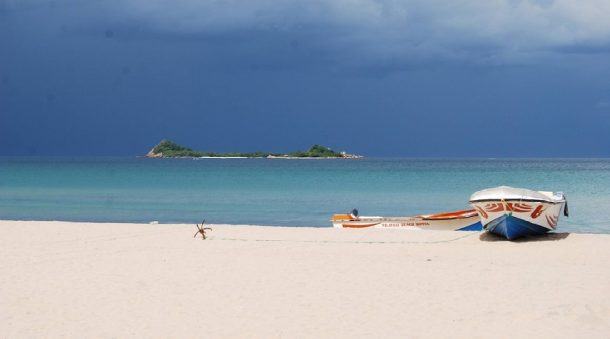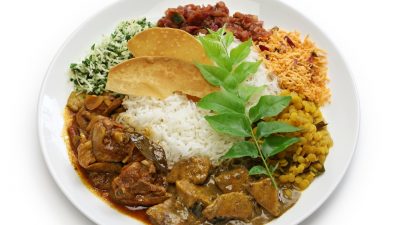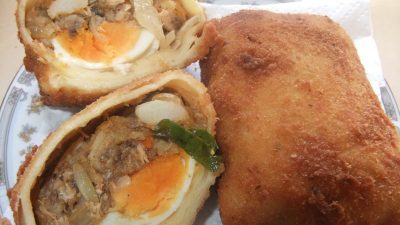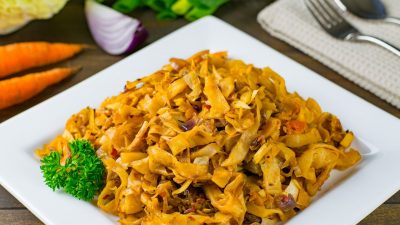Sri Lanka
The official name of Sri Lanka is Socialist Democratic Republic of Sri Lanka, but it is also known as Ceylon, which was the official name until 1972. The state is located in Asia and occupies the homonymous island located aff the south-east coast India. Due to its shape and its proximity to the Indian subcontinent is named “tear of India”. Since 1978, the capital of Sri Lanka is Sri Jayawardenapura Kotte. It is part of the British Commonwealth. The official languages are Sinhalese and Tamil, to which English is added.
The firts inhabitants of Sri Lanka were the Vedda. The Sinhalese came on the island in the late VI century b.C. and it was only towards the middle of the II century b.C. that Buddhism was introduced at the same time as the growth of civilization and the establishment of cities such as Anuradhapura and Polonnaruwa. Around the XIII century, there was a massive Tamil presence in the northern and coastal areas of the island, but the extent and the period of emigration are still the subject of debate among scholars. Well documented, however, is the Tamilsinvasion coming from southern India which stormed the capital Anuradhapura at the death of the Sinhalese king Uttiya in 286 of the Buddhist Era. They reigned for several decades, until 101 b.C., when Dutthagamani became the new king of the island. Tamil people emigrated in Sri Lanka, developped their own culture, compared those left behind in India; coexistence with the Sinhalese had ups and downs, with periods of peace and war and reciprocal invasions. The Sinhalese capital was moved in many cities over the centuries and with the succeding of kingdoms. When in 1505 the Portuguese attacked the island, the capital of Sri Lanka was Sri Jayawardanapura Kotte. Sri Lanka was a very useful hub for trade with Asia and it was a territory coveted from many European countries. In the XVII century also the Dutch arrived and in 1796 the island was given up to to the British and became a crown’s colony in 1802. To gain independence Ceylon had to wait starting from 1948. In 1972, the name was changed in Sri Lanka and the parliament moved to Sri Jayewardanapura Kotte. Clashes between the Sinhalese majority and the Tamil minority blew up in the 1980s, after an attack on some Sinhalese soldiers by the Tigers for the liberaton of Tamil Eelam. The unrest and the clashes that followed caused the death of a thousands Tamil people in just three days and many became refugees. In December 2001, after 20 years of fights and thousands lives sacrificed, the Tamil Tigers and the government of Sri Lanka signed a truce, with Norway as mediator of the peace process (guilty of supplying the Tamil Tigres with weapons). The Tamil Tigers have been declared a terrorist organization first by the United States and then by many other European and non-European countries. Chandrika Kumaratunga herself, president of Sri Lanka from 1994 until2005, admitted to the UN that deep discimination has always been rooted in Sinhalese society leading to acts of terrorism, but very few efforts have been made to guarantee equality for the Tamil population. In December 2004 a violent tsunami hit and devastated the southern and eastern coasts of Sri Lanka, causing the death of 40,000 people. The difficult situation made the clashes between Tamils and the military weaker, pushing the entire population towards gestures of solidarity and brotherhood. Unfortunately not even an event like this has prevented a few businessmen from exploiting the situation to their advantage, by approving laws that have led to strong privatizations and the construction of tourist facilities in coastal areas, to the detriment of homes and marina that were previously there. A large part of the population, temporarily welcomed in reception camps, lost not only their homes and lands but alsotheir livelihood, their fishing. These events caused a strong discontent and the ethnic fights started again. Today the biggest part of Tamil people live peacefully with Sinhalese, only a few Tamil separatists have created, in the north-east area of the country, a “de facto” state with their own police, tax and justice. Their goal has always been to obtain full autonomy and even in the 2000s they repeatedly attacked Colombo, until in 2009 the Sinhalese army has finally won the civil war that since 1983 (for 26 years) devastate the country. At that time, the president Mahinda Rajapaksa started a series of projects aimed at revitalizing and developing the country, by building modern infrastructures to increase tourism.
TRAVEL IN SRI LANKA
Conscious Journeys propose different itineraries in Sri Lanka, from which you can choose according to the time at your disposal or combined with India.
The ancient Ceylon is a small but very rich and varied, both from a historical and landscape point of view. It has ancient cities and full of monuments, with 8 UNESCO world heritage sites, forests and natural reserves and huge white beaches. A small island that allows you to live a varied and exciting experience. Choose the itinerary and leave for Sri Lanka with us!
THE BEST OF SRI LANKA
Duration: 12 Days
With this conscious tourism itinerary, you will live the whole essence of Sri Lanka in just one trip.
Great for: Private Travel
THE ESSENCE OF SRI LANKA
Duration: 8 Days
With this Sri Lanka tour, you will experience all the most important aspects of the country condensed in an unique journey that brings together culture and traditions.
Great for: Private Travel
THE BEST OF SRI LANKA: SPECIAL SUMMER EDITION
Duration: 12 Days
With this experiential tourism itinerary, you can experience the best of Sri Lanka, enclosed in a single trip during our summer
Great for: Private Travel
TREASURES OF SRI LANKA: SPECIAL SUMMER EDITION
Duration: 12 Days
This twelve-day Sri Lanka tour is ideal in summer and it will show you its majestic nature, as well as its culture and its wonderful beaches.
Great for: Group Travel
DISCOVERING SRI LANKA: WILDLIFE, TREKKING AND CULTURE
Duration: 14 Days
This is an innovative itinerary designed to discover some of the hotspots of biological and cultural diversity of Sri Lanka
Great for: Private Trip
SRI LANKA AND MALDIVES
Duration: 14 Days
This tour will show you the majestic nature, rich culture and wonderful beaches of Sri Lanka and the Maldives for an unique travel.
Great for: Private Travel – Honeymoon
INDIA AND SRI LANKA: SPECIAL SUMMER EDITION
Duration: 14 Days
This innovative itinerary was designed to show you only the best of the cultural and biological diversity of two countries such as India and Sri Lanka.
Great for: Private Trip – Honeymoon
Here you can find out about the travel extensions you can request in Sri Lanka.
Great fo: Travel Extension
PRINCIPALS DESTINATIONS
Sri Lanka is made up by nine provinces and 25 districts.
Kandy is the capital of the central province and is an ancient city, founded in the XIV century. In 1592, because the Portuguese had already taken the coastal areas, the capital of the kingdom was moved here because it was more easily defensible thanks to its central position. But in 1815, it was taken by the British who deposed the last king. It is considered a sacred city because in Kandy there is the temples that guard the sacred tooth of Buddha and it is one of the most Buddhist pilgrimage centers. Furthermore, between July and August, the Esala Perahera is celebrated, a large Buddhist festival during which a procession of richly decorated elephants takes place and dancers dance in honor of Buddha. The party is a remarkable tourist attraction and has become a true symbol of the country.
Anurādhapura is the capital of the central-northern province and is one of the ancient capitals of Sri Lanka, famous for its well preserved ruins of the ancient locals civilizations. It is part of the UNESCO world heritage. It was founded in the IV century b.C. and was the capital of the kingdom of Anuradhapura until the XI century, making it one of the most stable political centers of southern Asia. Sacred to Buddhists and rich in monasteries, the ancient city, covers an area of over 40 sq km and is one of the largest archaeological sites in the world. It is also a sacred city to Hindus: according to the legend Anuradhapura, it should be the marvelous capital of king Asura Ravana, one of the protagonists of Ramayana, the Hindu holy book.
Colombo, the capital of the Western province, was the capital until 1978, when the administration was moved to the new capital of Sri Lanka in Sri Jayawandernapure Kotte. Without any doubt, it is the most important city of Sri Lanka, both economically and commercially, and it is also the most populated.
Arugam Bay is a bay situated in the South-eastern coast of Sri Lanka. It is an important touristic attraction thanks to its long and soft beaches and to the perfect waves for surf lovers. A perfect place to prove yourself on a surfboard o just to relax by theseaside.
Sigiriya is an archeological site in the center of Sri Lanka, where there are the ruins of an ancient palace, built under the king Kaspyapa, who reigned between 477 and 495 AD. It is one of Sri Lanka’s eight world heritages sites and a renowned tourist attracion, considered from some to be the eighth wonder of the world.
Tangalle is a city situated in the Southern province of the country, an important trade port located in one of the largest bays of Sri Lanka. Here there are many European-style buildings, due to colonization, including the ancient Ducht Fort, now used as a prison.
SRI LANKA CUISINE
Through the typical dishes of Sri Lanka, you can see all the richness of this land, with all its colours and intensity. Basic elements of local cuisine are rice, fish in the coastal areas and beef or chicken in the hinterland, in a lot of local preparations spices and in particular chilli can be found; the tropical fruit is really fresh and colourful.
Some typical dishes are:
Curry rice: maybe the most typical dish, made with rice, which is considered sacred and a symbol of vitality. It consists of a white rice dish which is accompanied by various condiments, such as sauces and curry with vegetables, meat and fish. The peculiarity of the curry is that it is prepared and flavored with fresh spices and so it will always have a different flavor according to the proportions that change every time. It is impossible to eat two identical curries and maybe this is the charm of the dish.
Kottu roti: made of unleavened bread mixed with vegetables and other ingredients such as eggs, chicken, bacon and of course spices, cooked on a hot plate. It is a typical street food that can be eaten at the tableor taken away, but the show is its preparations, in fact the kitchens are often on view so the chefs can be observed while at work.
Daal Curry: is one of the most consumed dishes in the country, lentils (daal) are often cooked in coconut milk and almost transformed into a cream that goes wonderfully with rice.
Hopper: it is a sort of very thin and crispy crepes, which are given the shape of a small bowl,served with various chickpea sauces and vegetables. It is one of the cheapest dishes, but not less tasty.
Egg rotti: it is a street food suitable for those who don’t like spicy (which is often present in Sinhalese dishes); it is a kind of egg-filled puff pastry.
Buffalo and kitul yogurt: this yogurt is accompained by a syrup extracted from the palm tree of the same name, it has a soft consistency and the syrup gives the right sweetness to the dish.
USEFUL INFORMATIONS
How to get
Passport: necessary with residual validity of at least 6 months from the moment of the arrival in the country.
Entry visa: mandatory. From January 1, 2012 all the visitors wishing to travel to Sri Lanka (for tourism or business purposes) must acquire the entry visa “ETA – Electronic Travel Authorization”, at a minimum cost of $30, which allows them to stay in the country for 30 days. This visa can be requested online, on the website www.eta.gov.lk or through travel agencies or at the Sri Lanka embassy in Rome. It is also possible to obtain it directly on arrival at Colombo airport, but with a price increased of $35. It is also possible to extend the duration of the visa (from the date of entry into the country) by contacting the Sri Lanka representatives abroad, or personally at the Department of Immigration and Emigration in Colombo. From 18th January 2015, foreign passport holders have also been allowed to travel to the Northern province, but it is strongly recommended to follow the instructions of the security forces and to pay attention to the signs indicating the presence of mines.
Sri Lanka climate:
The climate in Sri Lanka is tropical and very hot during the day. During summer months ( April-June) the temperatures can reach the 44°C, while early in the morning and in the evening are pleasant, ranging between 18 ° and 24 ° C. Duringwinter (October-March) however, the night temperatures range from 2 ° to 29 °, while the days are sunny and mild. Between mid-June and September, heavy rains hit the country, with an average of 1400mm of rain. So when hen asked what is the best time to go, the answer can be from May to October.
Time Zone
GMT +5.30h
Currency
Rupia Sri Lanka (LKR) 1€ = circa 160 rupie
Population
The inhabitants of Sri Lanka are around 21 million people.
Sri Lanka safe to travel
Compulsory vaccinations: only vaccination against yellow fever is mandatory for all travelers over the age of one year who come from countries at risk or who have transited.
Warnings: cases of dengue (also of the hemorrhagic type) are increasing, with virulent manifestations during the monsoon periods. Malaria has been eradicated, but rare cases have been reported in Anuradhapura and Polonnaruwa. We strongly recommend taking all appropriate preventive measures:
Wear clothes that cover you body as much as possible, especially arms and legs; use anti-mosquito repellents and stay in places with mosquito nets.
It is also advisable to contact your doctor or the travelers’ health center to make vaccinations against hepatitis A and B, cholera, tetanus; to carry a supply of medicines against the most common diseases; to consume water and drinks only in bottles or cans and avoid ice; to protect yourself from the sun by using protective creams.


